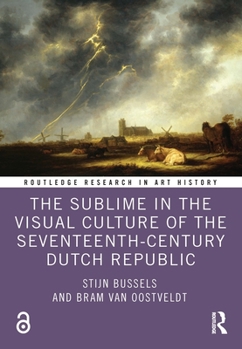The Sublime in the Visual Culture of the Seventeenth-Century Dutch Republic
Contrary to what Kant believed about the Dutch (and their visual culture) as "being of an orderly and diligent position" and thus having no feeling for the sublime, this book argues that the sublime played an important role in seventeenth-century Dutch visual culture. By looking at different visualizations of exceptional heights, divine presence, political grandeur, extreme violence, and extraordinary artifacts, the authors demonstrate how...
Format:Hardcover
Language:English
ISBN:1032375876
ISBN13:9781032375878
Release Date:November 2023
Publisher:Routledge
Length:200 Pages
Customer Reviews
0 rating





